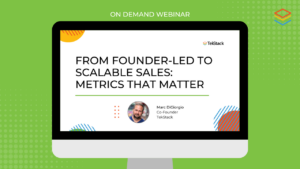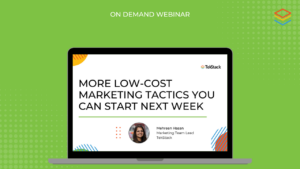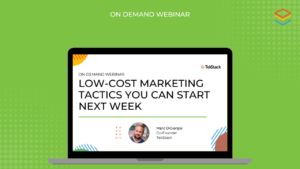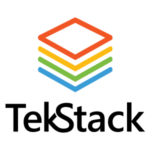
As a Microsoft partner, competition is fierce and fast. Its getting harder and harder to find new customers because its getting harder to differentiate from other Microsoft partners out there. That’s the reality of how Microsoft is transforming their partner network. If you are like most partners, the greatest lead source for your new deals is likely referrals over more expensive inbound or outbound sales and marketing efforts. Unless you are an ISV, or a high volume play, the contribution margin of the software transaction barely covers the sales costs.
The result is that, more than ever, partners are growing on the back of existing customers and services projects. Getting good at Upsells and Cross-sells becomes increasingly important. Most likely, the sales efficiency (sales result over sales cost) of existing customer deals is going to be much higher than new customer deals. But where do you start? This article provides a cheat sheet on building a Customer Success model. You can also download our Self Assessment Tool to see how you would rank yourself in this category.
Segment your Customers
If you have 100 customers, how would you segment them? Not all customers require a dedicated account manager. The 80/20 rule always applies. The idea of segmentation is to identify the 20 customers that will drive 80% of your upsell business. Once categorized, it becomes much easier to assign account managers and run playbooks. Segment criteria could include things like “Attitude towards Technology”, “Propensity to Invest in Technology”, against criteria like “Strategic Fit”, “Size of Customer”. The result should be that you can plot all customers in one of four segments with the top right segment representing customers that both want to invest time/money with you, and vice versa. You then want to mark each customer with that segment id.
Customer 360 Visibility
For an account manager or customer success manager to be successful in their job, they need to be able to see key information such as:
- Who are the right contacts? Who is talking to them? What is our company’s activity and email history with them?
- What is their annual commitment to us? What is the Lifetime Value?
- What does this customer own, how many, and at what price? What do they not own but should?
- What is their subscription and order history?
- How are their projects going?
- When is their renewal (or renewals) coming up?
- Are they paying their invoices?
- How is their onboarding going? Are they live?
- Are they using support? If so, are they on fire?
- What customer segment are they in?
- Are the receiving marketing communications?
Seems straight forward, but most CRM systems do not hold this information, or the information is so dated that no one trusts it. TekStack calls this ‘Customer 360’. Its impossible to do the job effectively if you can’t answer basic questions about the customer’s activity with you.
Quarterly Reviews
Only for your top segment customers, you will want to encourage a quarterly review process. If your customer doesnt value the quarterly business review, then they are not a top segment customer, get them out of that segment as you are wasting your efforts. Do not try to do quarterly reviews with all your customers. Its a fools errand and will consume the time of your account managers while getting nothing back. Quarterly Reviews need to be aligned to the business goals of the buyer, not yours. Their business goals need to be captured somewhere, with key metrics tied to each objective. For each objective, identify where your solution can help them achieve the objective, and track activity and progress across each.
Automated Playbooks
For all other customers outside of your top segment, stick them on automated playbooks that combine marketing activities (such as quarterly lunch and learns, email newsletters, product announcements) with sales activities that can be automated and personalized. Make a list of all the inventory you have to offer and put a marketing program around each of them.
Customers at Risk
You will want to identify customers that have poor health. Some people try to automate a health score using data points. If you are talking about 50 to 200 customers you dont need this. Simply make an effort to track health temperatures (green, yellow, red) with red being customers that are of poor health. You can use indications like customer sentiment scores (CSAT or Net Promoter Score) as well as Case/Ticket information from support. But other health triggers could be things like change of ownership, new decision makers, or other macro economic events. Once you can track customers at risk, you need to build an at-risk playbook, presuming you want to keep the customer. This is where segmentation becomes important. Not all customers need to be kept.
Targets and Metrics
You will want to establish targets and be able to gauge your progress to the target at any time. Key metrics would include things like:
Net & Gross Retention Rates. Gross retention is basically how much existing customer recurring revenue has churned over the last period’s revenue. Net retention includes upsells and uplifts minus the loss over the same period. You generally want to be at least 90%+ gross retention and 110% net retention. Anything larger is great.
Sales Velocity. This tells you the rate of how many dollars per day you are booking. Lets say your overall sales booking goal is $1M for the year, and $500K is from existing customers and $500K from new customers. Your existing customer sales velocity should be $1,370; in other words, if you are on a run rate of booking $1,370 or more, you are hitting your target. If not, you should look into the data to find out why you dont have enough opportunities, have a poor win rate, low average deal size, or too long a sales cycle. To learn more about sales velocity, check out this blog.
Win Rate. Very important metric. Your win rate on existing customer opportunities should be pretty high, at least 50%. If its not, you need to look at why, and want to break down the win rate by product, seller, and customer segment. Key here is separating opportunity types from New Customer and Existing Customer. Be sure to exclude renewal opportunities as well.
Sales Bookings. Simply the total dollar value of opportunities closed as won. Again, only focusing on existing customer deals. Try to separate between recurring software or services, and one-time services. Bookings represent a commitment to spend, essentially future recognized revenue.
Opportunity Creation. There is no point in looking at deal value created. Early stage deals never have the correct opportunity values. You are better off looking at opportunity creation as a count. If your goal is $500K of existing customer deals booked, and the average deal size is $25,000 then you need to book 20 deals in the year, or just under two per month. If your win rate is 50% then this means you need to create 40 opportunities in the year, or just over three per month to hit your target. This is a great leading indicator to keep an eye on.
Sales Activity. Another important leading indicator is sales activity. What effort is your account management team putting into the selling effort. We would recommend automating most of the activity tracking and would look at things like emails sent, phone calls, and other activity sources. Its hard to put a number on it but almost always, if you had a low opportunity month its because the activity volume fell off 1-2 months previously. This is almost always the case. So, keep an eye on volumes and set commitments with your team.
Conclusion
Existing Customer revenue is a critical source of growth as a Microsoft partner. It doesnt happen by accident. To be intentional about improving sales bookings and net retention rates you need to segment customers, give your account management teams the tools and information to be successful, you need to put in playbooks, and then track results relative to targets.
How TekStack can help
TekStack gives you all the tools and processes to achieve everything in this blog. Segmentation, marketing playbooks, sales playbooks, Customer 360, and all the reports you can handle. All processes come prescribed and out of the box ready. Our tech is based on Power Apps and can plug into your existing Dynamics 365 for Sales, or even replace it.








